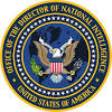Intelligence Community secures top spot In national security in ‘Best Places To Work In Federal Government’
 For the seventh consecutive year, Intelligence Community employee job satisfaction ranks the IC as one of the “Best Places to Work in the Federal Government,” according to an independent analysis of federal workers’ job satisfaction and commitment.
For the seventh consecutive year, Intelligence Community employee job satisfaction ranks the IC as one of the “Best Places to Work in the Federal Government,” according to an independent analysis of federal workers’ job satisfaction and commitment.
The IC finished in first place in national security and second overall – up from fourth place in 2014 – among large agencies that employ more than 15,000 full-time permanent employees, a category which includes 19 organizations. Rankings were compiled by the Partnership for Public Service and announced today.
Additionally, the IC finished in first place in teamwork, second in pay, effective leadership, employee skills-mission match and third in strategic management.
Director of National Intelligence James Clapper praised the IC workforce for consistently rising to the challenge during a difficult time for the community, and said the ranking is an indication of the IC’s commitment to the mission.
“Amid the diverse array of threats facing the world, our nation’s dedicated IC workforce continues to address the toughest challenges and provide the most accurate information to policymakers,” he said. “This year’s rankings reflect that IC personnel are not only extremely dedicated to intelligence integration, but also enjoy the critically important work that ensures our nation’s security.”
Deborah Kircher, the assistant director of national intelligence for Human Capital and the U.S. Intelligence Community’s chief human capital officer, accepted the award on behalf of the director of national intelligence during a ceremony at the Ronald Reagan Building, in Washington, D.C., today.
“While much of what we do cannot be publicized for security reasons, this award serves as recognition of the hard work and dedication shown consistently throughout the intelligence community,” she said.
The “Best Places to Work in the Federal Government” rankings offer the most comprehensive assessment of how federal public servants view their jobs and workplaces, providing insights into worker satisfaction and commitment on issues ranging from leadership and pay to innovation and work-life balance.
“The employee voice is one of the most powerful tools that federal leaders have to understand their organizations,” said Max Stier, president and CEO of the Partnership for Public Service, in a statement. “The Best Places to Work in the Federal Government data can be used to increase employee commitment and improve performance as agencies strive to better serve the American public.”
PPS is a non-profit, nonpartisan organization that aims to revitalize the federal government by transforming the way government works and inspiring a new generation to serve. The institute conducts research and helps federal leaders solve difficult public-policy issues. According to PPS, the Best Places to Work rankings are “the most comprehensive and authoritative rating of employee satisfaction and commitment in the federal government” and “are an important tool for ensuring that employee satisfaction is a top priority for government managers and leaders.”
Rankings are based on data from the 2015 Federal Employee Viewpoint Survey which the U.S. Office of Personnel Management administers, as well as from surveys administered by 11 additional agencies plus the Intelligence Community. The first survey was in 2003, but the IC has only participated since 2009 and has been ranked a top place to work every year.
To maintain the security of information about its work force, the IC relies on its own instrument to assess, each year, how its workers feel about issues such as job satisfaction, professional development, and the effectiveness of senior leaders. Beginning in 2009, the IC included several questions from the federal survey provided by PPS in its annual Employee Climate Survey. The Community’s information was then comparable with that from other organizations under consideration for Best Places.
Since the first rankings were produced, they have provided federal managers and leaders with data to help boost employee engagement. Additionally, the results are a resource for current and prospective employees, researchers, and policymakers. More details are available online at http://bestplacestowork.org.
Source: ODNI







